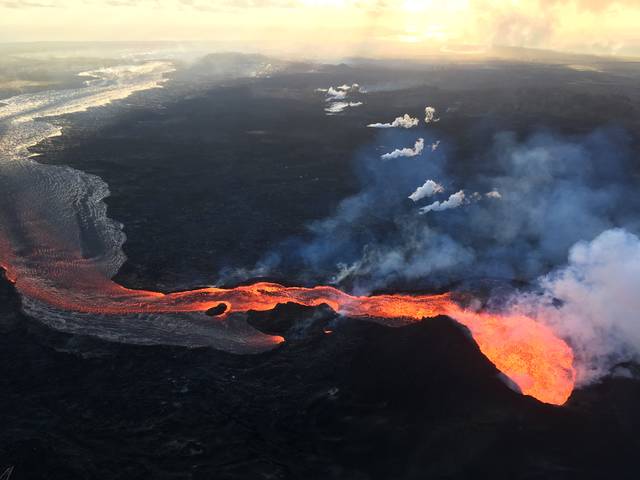No significant change in volcanic activity
Eruptive activity along Kilauea’s lower East Rift Zone continued Sunday with no significant change.
Hawaiian Volcano Observatory reported that fissure No. 8 remained very active, feeding a lava channel to the ocean at Kapoho. The flow continued to produce a broad ocean entry along the shoreline and continued its expansion into Kapoho Beach Lots and north of Four Corners intersection.
ADVERTISING
Kapoho Beach Lots and Four Corners remained closed to any access, according to Hawaii County Civil Defense. Spillovers from the lava channel and active breakouts are possible in the active flow field.
Fissure No. 22 continued to spatter weakly, according to HVO. Volcanic gas emissions remain very high from fissures 8 and 22.
The National Weather Service forecast weak tradewinds, at least through tonight.
Another collapse-explosion event occurred at 2:55 a.m. Sunday at Kilauea’s summit generating energy equivalent to a magnitude-5.4 earthquake. Seismicity dropped abruptly afterwards, but is expected to increase and culminate in another collapse-explosion sometime today. Inward slumping of the rim and walls of Halema‘uma‘u crater continues in response to the ongoing subsidence at the summit.
Sulfur dioxide emissions from the summit have dropped to levels that are about half those measured prior to the May 3 onset of the current episode of eruptive activity. The gas and minor amounts of ash continue to be transported downwind, with small bursts of ash and gas accompanying intermittent explosive activity.
The Disaster Recovery Center remains open daily at Keaau High School gym from 8 a.m. to 6 p.m. weekdays, and from 8 a.m. to 4 p.m. on weekends. Buses run between the Keaau and Pahoa evacuation shelters and the DRC.


